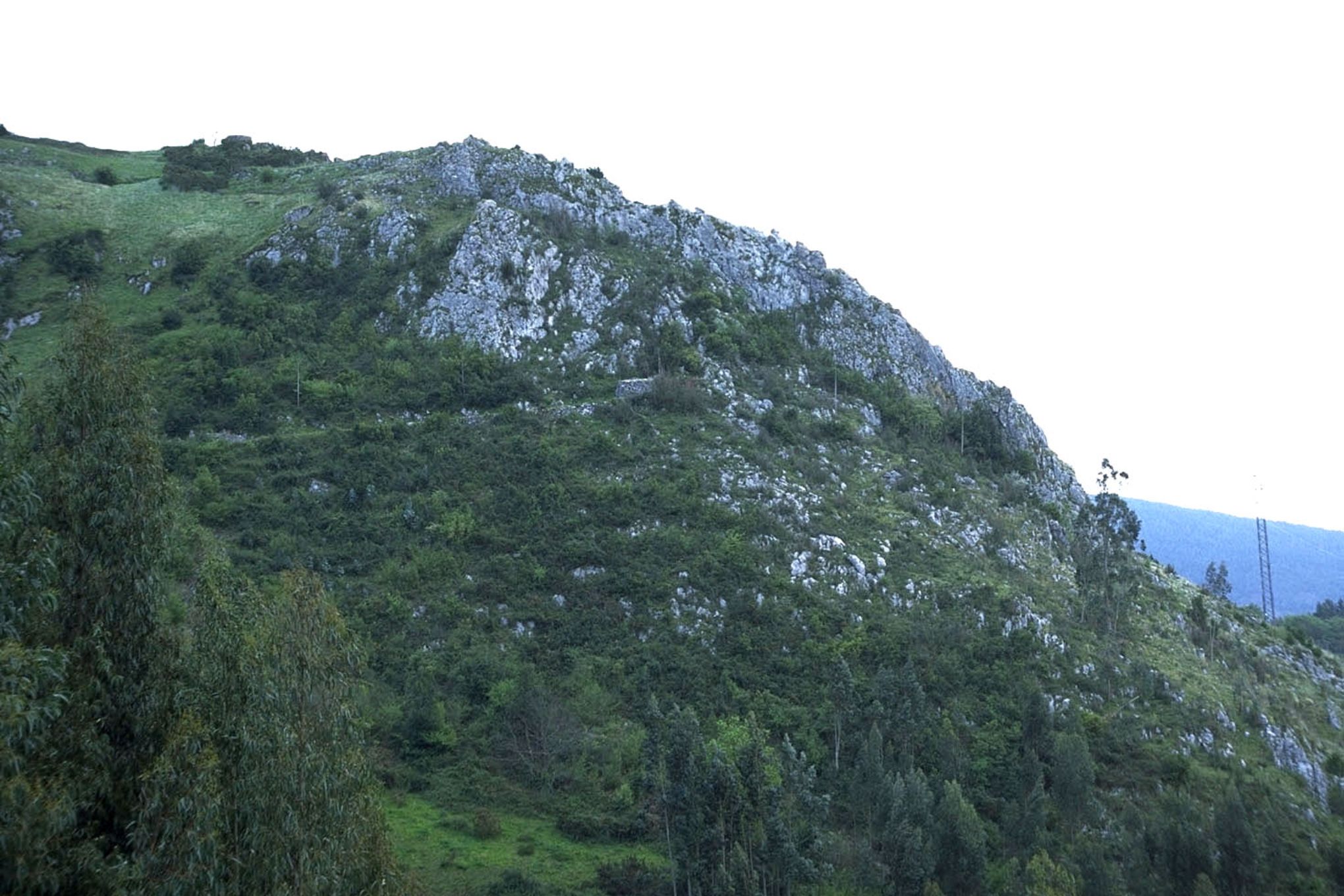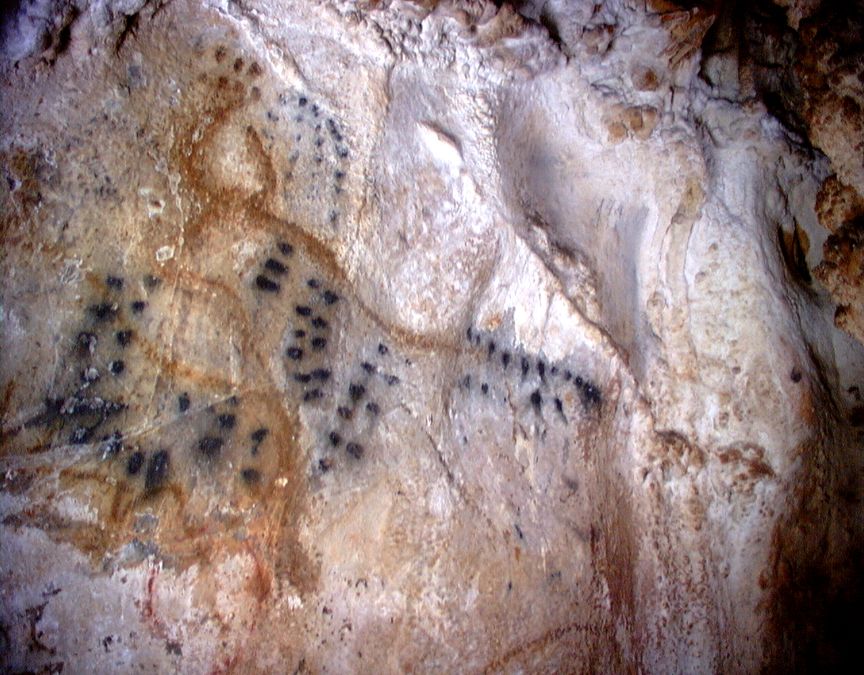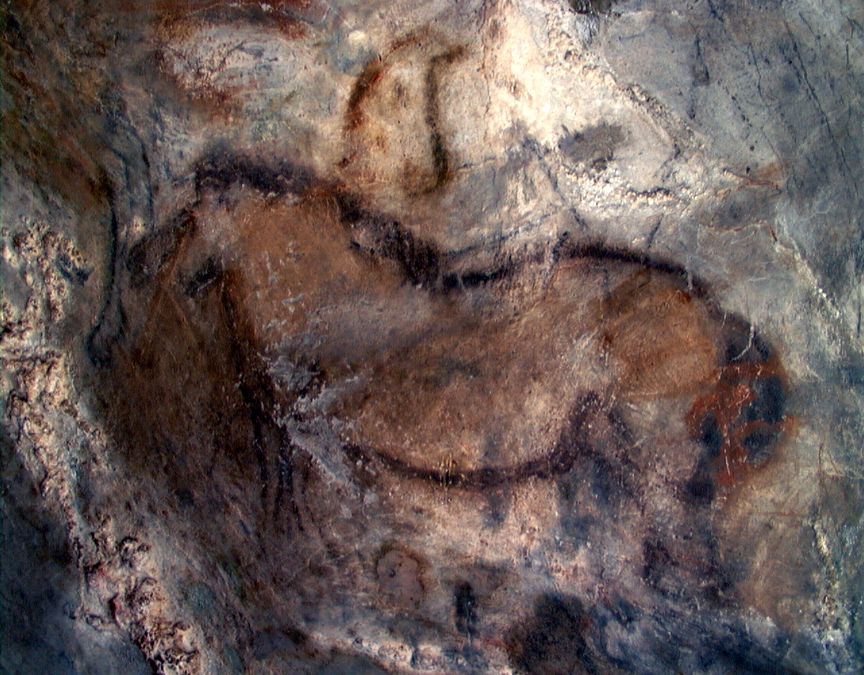La Peña Cave

Identification of the Property
SubirSan Román, Candamo, Principality of Asturias
Access
From the N-634, in the town of Grado, take the AS-237 road and its link with the AS-236; San Román de Candamo is located between kilometers 4 and 5, from where a small road starts that leads to the car park near the cave.
Geographical coordinates
UTM 29T 736950E / 4815800N Z: 200
Description
SubirDate of Discovery
Known by the residents of the area since the mid-19th century, the cavern's scientific discovery occurred in 1914.
Archaeological research
The cave was studied between 1914 and 1917 by E. Hernández Pacheco. This prehistorian, assisted by J. Cabré and Benítez Mellado, carried out an excellent work of documentation and analysis of the prehistoric art. Later, other archaeologists have revised aspects of the art assemblage, such as F. Jordá and M. Berenguer in the 1950s and A. Moure and J. Fortea in the 1980s and 90s. In 2008 the current investigations began under the coordination of S. Corchón.
Topographic description
The archaeological site at La Peña de Candamo is the westernmost Palaeolithic art assemblage in North Spain. The entrance is situated on the right hand bank of the River Nalón, at the top of a hill, at about 200m above sea level. It is in a strategic position, from where to watch several natural routes of communication.
The cave is not very big. It consists of a large chamber with a small vestibule and side passages. The entrance is through a horizontal passage leading to two chambers; the “Hall of the Red Signs” on the right (west) and the “Vestibule” on the left (east). After a narrowing, the Great Hall, or “Hall of the Engravings” is reached. A smaller high level chamber, the “Camarín”, is found in the southern wall of the Great Hall. The abundance and importance of calcareous neoformations has strongly conditioned the distribution of the representations, which are divided into the three or four walls suitable for decoration..
 Pulse para ampliar
Pulse para ampliar
Artistic contents: paintings and engravings
The main group of depictions is found on the west wall in the Great Hall. At least three layers of figures are superimposed here. The oldest consists of six figures painted in red sienna. Over these, another eleven animals are painted in black. Finally there are 26 engravings with certain intentional associations: wounded stags, a group of bison, bovines facing each other, and some chamois.
The interpretation is not easy, given the number of superimpositions and the damage caused by modern alterations. Topographically, the figures can be described as follows:
In the upper part, on the left, the first group of stags, bison, a chamois and an anthropomorph all face left.
 Pulse para ampliar
Pulse para ampliar
The head of a chamois is a linking element to the second group, lower and to the right of the first. Here there are stags –one of them wounded with a spear in its hind– quarters, an ibex, bovines, a horse’s head and another anthropomorph with his sex clearly marked. A seal has been depicted over the head of a large bovine. The animals face both left and right, and some signs are found among them, particularly a broken zigzag line.
Outside this group, at the top of the wall, a bovine’s head and an ibex act as links to the third group. Several bovines, a large stag and horse, all face left. A large stag turns its head to look back. Again, several signs are intermixed with the animals, in the form of dots and lines. Finally, on the far right and slightly higher tan the last group, a number of bovines have some signs superimposed on them.
As well as this “Wall of the Engravings”, La Peña de Candamo has groups of art in other parts of the cave.
Thus, a stalagmite is decorated with two horses’ heads and a hind, as well as linear signs, together or separated. An area of flowstone has a horse engraved with multiple lines and painted in sienna, accompanied by two black signs. Lastly, the “Camarín” has beautiful painted figures of horses, bovines and an ibex set in a deliberately chosen hollow in the wall, giving them a certain theatrical character.
The Hall of the Red Signs, in the entrance passage, has some red dots, a few vertical lines and an oblique one. Other signs, one of them triangular, complete the group.
The art ensemble at La Peña de Candamo is complex, made up of successive additions of paintings and engravings throughout the Solutrean and lower and middle Magdalenian periods (from about 21,000 to 13,000 years B.P.)
Bibliography
SubirCORCHÓN, S., GÁRATE, D., VALLADAS, H., PONS-BRANCHU, E., RIVERO, O., HERNANDO, C., ORTEGA, P. 2013.La cueva de La Peña (San Román, Candamo). Estudio integral del arte parietal paleolítico (2009-2012), Excavaciones Arqueológicas en Asturias 2007-2012. 15-26. Oviedo.
CORCHÓN, S., GÁRATE, D., RIVERO, O. (eds.). 2019. La Caverna de La Peña de Candamo (Asturias): 100 años después de su descubrimiento. Salamanca.
HERNÁNDEZ PACHECO, E. 1919. La caverna de La Peña de Candamo. Madrid: Comisión de Investigaciones Paleontológicas y Prehistóricas. Memoria nº 24.
MOURE ROMANILLO, A. 1981. Algunas consideraciones sobre el «Muro de los grabados» de San Román de Candamo (Asturias). Altamira Symposium (Madrid, 1979): 339-352. Madrid: Ministerio de Cultura.
RODRÍGUEZ ASENSIO, J. A. 2012. La Caverna de La Peña de Candamo. El Paleolítico Superior Cantábrico: Primera mesa redonda San Román de Candamo (Asturias), abril de 2007: 49-57. Santander.



